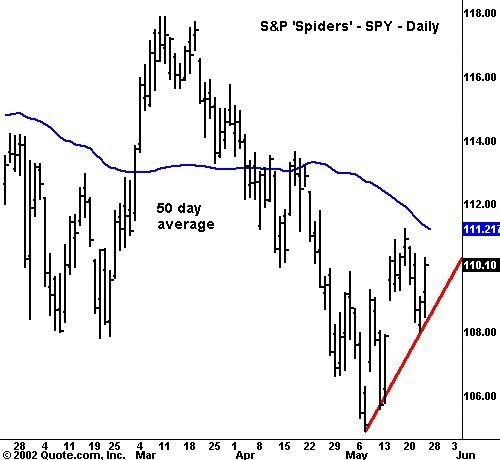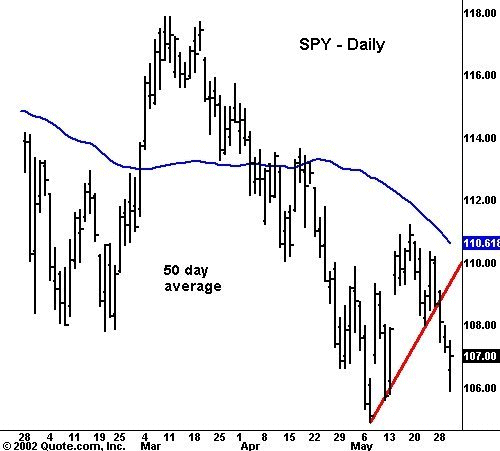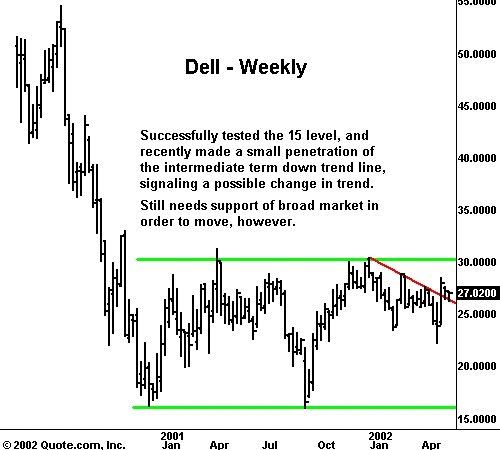Mid-Cap Fishing Hole
Not a particularly
eventful week for the stock market.
Just more of the run-of-the-mill dripping action we’ve
become so familiar with lately. A
week ago we suggested the idea that the long-term trend remains down
and that a break of the nearby support trend line in the SPY was good
trigger for going short. A
before-and-after photo is in order (mind you this article is submitted
on Thursday evening).


We also suggested that if the market found
support, the place to fish for long candidates would be from the
mid-cap field. Although we got
mixed results here, some of the names on our list, like Electronic
Arts
(
ERTS |
Quote |
Chart |
News |
PowerRating), DENTSPLY
International
(
XRAY |
Quote |
Chart |
News |
PowerRating), Carpenter
Technology
(
CRS |
Quote |
Chart |
News |
PowerRating) and Glatfelter
(
GLT |
Quote |
Chart |
News |
PowerRating) managed to hold their own.
These names still bear watching should the market stage a
rebound. I’ve also been
keeping an eye on one big-cap name in particular, DELL, which has an
interesting double bottom pattern and should participate nicely if the
market ever manages to generate an uptick.

Looking out over the next week, we need to
continue focusing on the key support and resistance levels in the
broad market (S&P and Nasdaq) represented by the May 7 lows and
the mid-May highs respectively. Repeating
from last week, if the market should fail to hold support, then a
retest of the September 2001 lows seems likely in my opinion.
Taking out resistance would enhance the odds of an
intermediate-term bottom.
I discussed the state of the commodity
markets in this column several weeks ago and mentioned Corn
as a potential long play. I was
looking for support at 208 on a retracement in the July contract.
Corn did bounce nicely following its first test of 208, but
subsequently traded down to 204, and has since rallied back to 212.
I maintain my bullish posture on Corn, and the grains in
general.
Before closing, I would like to talk for a moment
about trader education. My
first exposure to technical analysis was through John Murphy’s book Technical
Analysis of the Futures Markets,
particularly chapters 4 through 6, which give a concise treatise on
the subject of classical chart patterns.
In my opinion, these three chapters alone will put you well on
your way to understanding how the markets work.
Once you form an understanding of these basic chart patterns,
everything else you learn will be an extension of this knowledge.
At least that’s been the case for me.
On the subject of classical charting, I would also recommend
Clifford Pistolese’s Using Technical Analysis and William
Jiler’s How Charts Can Help You in the Stock Market.
Till next week, take care.
